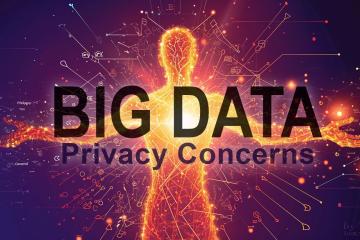Data analytics examines large amounts of data to uncover patterns and insights. This helps organizations make informed decisions.
In cybersecurity, data analytics is crucial for detecting and preventing cyber threats.
By analyzing data from various sources, cybersecurity professionals can identify vulnerabilities and anomalies. They can also respond to security incidents effectively.
Key Concepts
Definition
Data analytics is the science of analyzing raw data to draw conclusions. It involves applying algorithms to derive insights. It also involves looking for meaningful correlations in data sets.
Purpose
Data analytics helps organizations identify and mitigate security risks. It provides insights into potential threats and suspicious behavior. This is done by analyzing data from network logs, security alerts, and user activity.
Relevance
Traditional security measures are no longer enough to protect against cyber attacks. Data analytics has become essential for cybersecurity professionals. It helps them stay ahead of cyber criminals and minimize the impact of security incidents.
Organizations can detect threats in real-time and make data-driven decisions. This improves their overall security posture.
Also Known As
- Security Analytics
- Cyber Analytics
- Security Data Analytics
Types of Data Analytics in Cybersecurity
- Descriptive Analytics: Analyzes historical data to identify patterns and anomalies. It helps answer "What happened?"
- Diagnostic Analytics: Determines the root cause of a security incident. It helps answer "Why did it happen?" This is essential for preventing similar incidents.
- Predictive Analytics: Uses statistical models and machine learning to identify potential future threats. It helps organizations anticipate and prevent security issues.
- Prescriptive Analytics: Suggests the best course of action based on data insights. It helps answer "What should we do?" It provides recommendations to mitigate risks and optimize security.
Examples
- A bank uses data analytics to detect fraudulent transactions in real-time. It analyzes customer behavior patterns and identifies anomalies.
- A hospital uses data analytics to monitor user activity and detect insider threats. It analyzes access logs and identifies suspicious behavior.
- An online store uses predictive analytics to anticipate DDoS attacks during busy periods. It proactively implements mitigation strategies.
Importance in Cybersecurity
Security Risks
Data analytics helps identify potential security risks such as:
- Malware infections
- Phishing attacks
- Insider threats
- Data breaches
- Unauthorized access attempts
Mitigation Strategies
To mitigate these risks, organizations can:
- Monitor and analyze network logs and security alerts in real-time.
- Implement user behavior analytics to identify suspicious activity.
- Use machine learning to detect advanced threats and zero-day attacks.
- Conduct regular vulnerability assessments and penetration testing.
Best Practices
To effectively use data analytics in cybersecurity, organizations should:
- Set clear objectives and metrics for data analytics initiatives.
- Ensure data quality and integrity through data governance practices.
- Invest in the right tools and technologies, such as SIEM systems.
- Foster collaboration between data scientists, cybersecurity professionals, and stakeholders.
- Continuously monitor and refine data analytics models.
Related Terms
- Machine Learning: A subset of AI that involves training algorithms to learn from data and improve over time.
- Big Data: Extremely large data sets that can be analyzed to reveal patterns and trends.
- SIEM: Software that aggregates and analyzes activity across an entire IT infrastructure.

